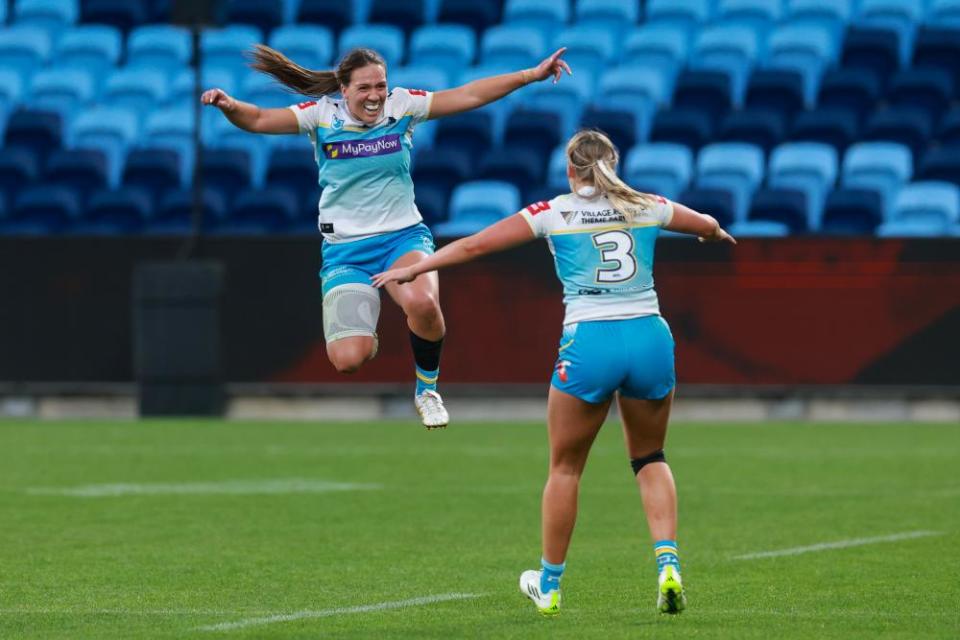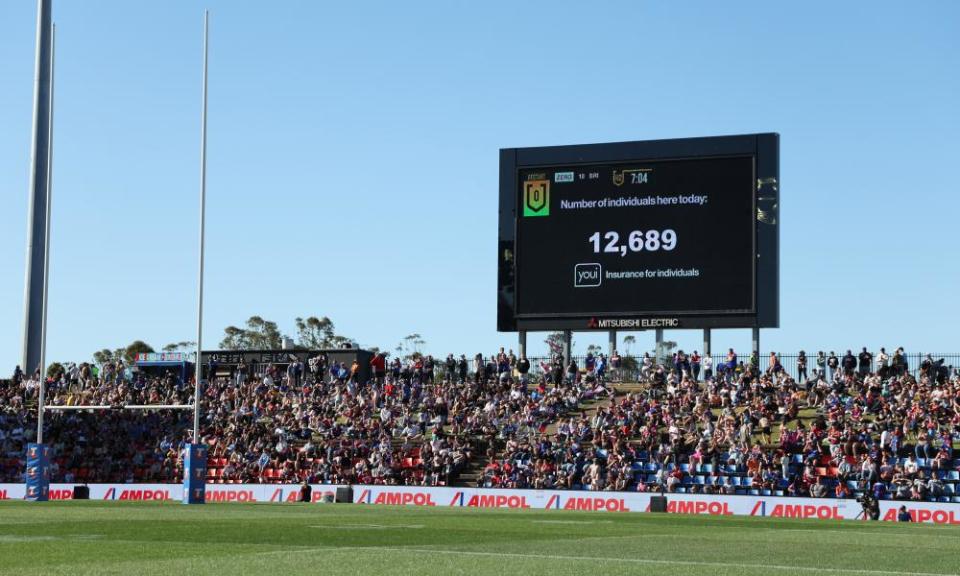NRLW grand final a chance to showcase six-year women’s rugby league journey

When the NRLW began in 2018, it was with a tiny spark. Starting even smaller than the AFLW, only four teams of the then 16 NRL clubs were granted licences and the competition was held over four weeks, as double headers with the men’s games during the finals series.
It has taken some time for that tiny spark to catch fire. This season – with 10 teams, nine rounds of competition and two weeks of finals – the NRLW was able to take up the space required to make people take notice. In previous seasons, it often felt like a case of blink and you’ll miss it, with the women appearing and disappearing from television screens just as new fans were getting into the habit of watching them.
Related: Titans lock in NRLW grand final against Knights after stunning Roosters
This sixth season has brought with it heightened visibility – the value of which was highlighted by the Newcastle Knights in their semi-final win over the Brisbane Broncos on Sunday, with 12,689 fans flocking into McDonald Jones Stadium – a record crowd for a standalone NRLW match. The Knights will now play in the grand final for the second consecutive year, after winning their first premiership in 2022 in just their second year in the competition.
The Gold Coast Titans did not have the advantage of a home crowd in their semi-final, but that proved no barrier in running over the top of the Sydney Roosters at Allianz Stadium and becoming the first Titans team – men’s or women’s – to qualify for a grand final. It has been a huge turnaround in form for the 2022 wooden spooners, with the competition’s sole female head coach in Karyn Murphy showing what she has to offer with a second season in charge of the team. Interestingly, the Knights finished with the wooden spoon in 2021, before powering to the top of the table and coming away with the premiership in the following season.
It is now down to these two teams as they take centre stage at Sunday’s grand final and showcase women’s rugby league and the journey it has been on in just six short seasons.

It is notable that both grand finalists entered the competition as part of the initial expansion to six teams, and have edged out the foundation clubs to usher in a new era of the NRLW. With the number of teams set to stay at 10 for the next couple of years at least – although the collective bargaining agreement has room for it to increase to 12 by 2027 – there is the opportunity for further stabilisation of this new era, as movement between teams slows down.
With that will come further improvement of the competition, although this season has already demonstrated progress in some key areas. Average run metres a game for each team have increased from 1,404m in 2022 to 1,434m in 2023. Each team is scoring an average of 20.27 points per game, up from 18.45 in 2022. And despite more teams entering the competition, errors have decreased – with teams averaging 8.83 each game in 2023 compared to 9.6 in 2022.
The final frontier – as is the case for many women’s sports – is a full home-and-away season, with all the included luxuries that come with that, such as the opportunity to build into the season, develop rivalries and make home grounds into fortresses. The Knights showed the ability to connect with a passionate fan base and crowds rose along with the fortunes of both their men’s and women’s teams across this season. With more games in front of their home crowd, they will have the opportunity to make that connection even greater.

“It’s not women’s sport, it’s just sport” is often the catch cry that echoes through these big moments. But in most cases this simply isn’t true – there’s a different energy that runs through women’s sport, like it is played at a different frequency. The rules are the same, the grounds are the same, but the air is different. Each of the women’s sports often seem to have more in common with each other than with men’s competitions. It does not make them less than men’s sport to note this distinction – different is not the same as unequal. It’s simply an acknowledgment of a distinct culture.
The culture of rugby league however, is unmistakable in the NRLW, as firmly ingrained as the smell of Deep Heat in the change rooms. With the time and space now allowed for the women to make their mark on passionate fans of their clubs, they are beginning to march alongside the men and fans are now seeing them as one club. To those 12,689 people who stormed through the gates in Newcastle, it’s not women’s rugby league, it’s just rugby league.

 Yahoo Sport
Yahoo Sport 



































































